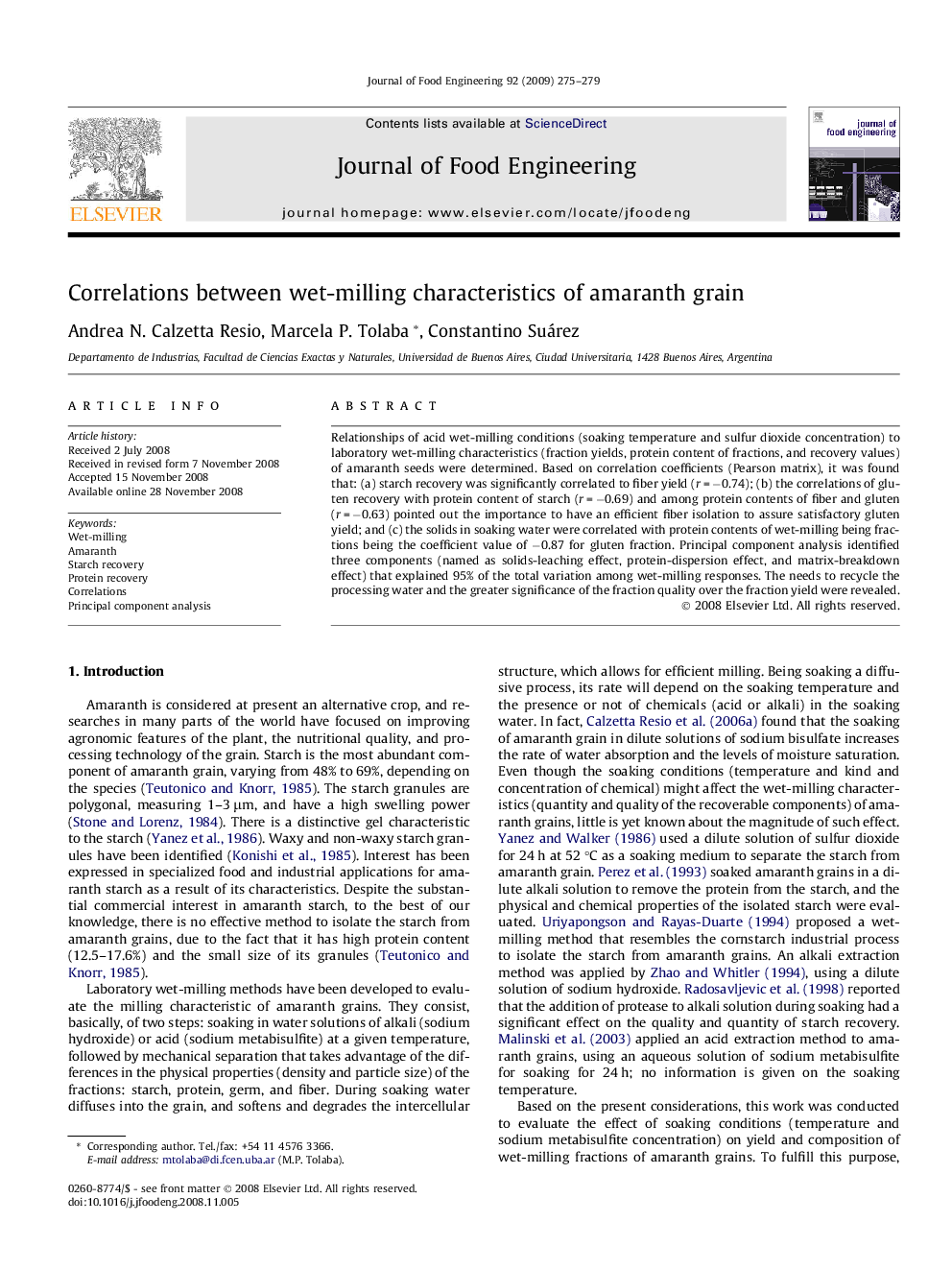| Article ID | Journal | Published Year | Pages | File Type |
|---|---|---|---|---|
| 224596 | Journal of Food Engineering | 2009 | 5 Pages |
Relationships of acid wet-milling conditions (soaking temperature and sulfur dioxide concentration) to laboratory wet-milling characteristics (fraction yields, protein content of fractions, and recovery values) of amaranth seeds were determined. Based on correlation coefficients (Pearson matrix), it was found that: (a) starch recovery was significantly correlated to fiber yield (r = −0.74); (b) the correlations of gluten recovery with protein content of starch (r = −0.69) and among protein contents of fiber and gluten (r = −0.63) pointed out the importance to have an efficient fiber isolation to assure satisfactory gluten yield; and (c) the solids in soaking water were correlated with protein contents of wet-milling being fractions being the coefficient value of −0.87 for gluten fraction. Principal component analysis identified three components (named as solids-leaching effect, protein-dispersion effect, and matrix-breakdown effect) that explained 95% of the total variation among wet-milling responses. The needs to recycle the processing water and the greater significance of the fraction quality over the fraction yield were revealed.
